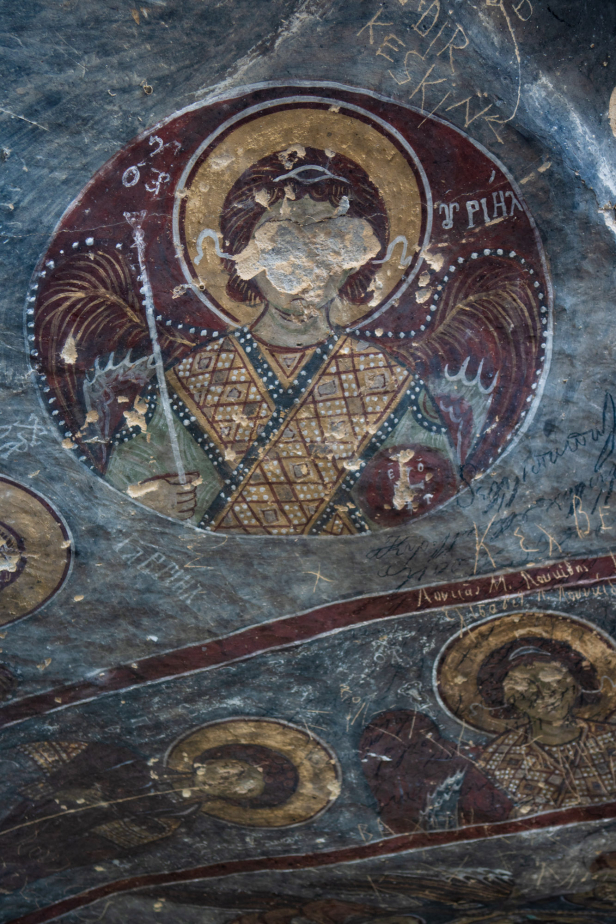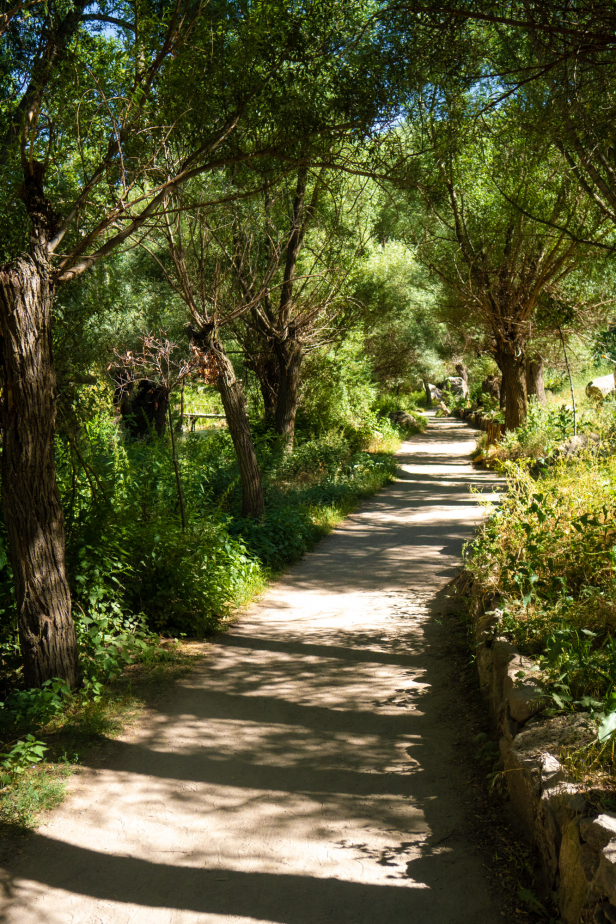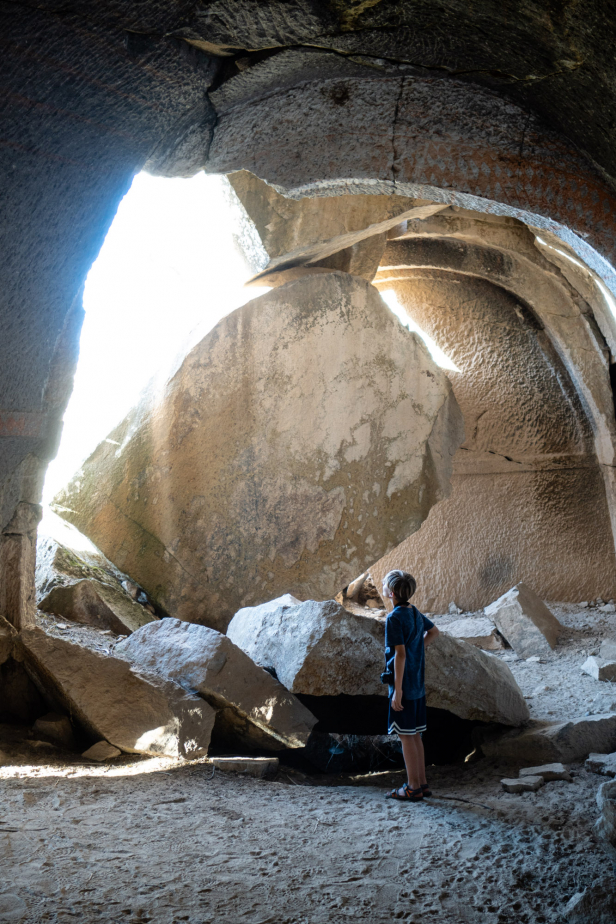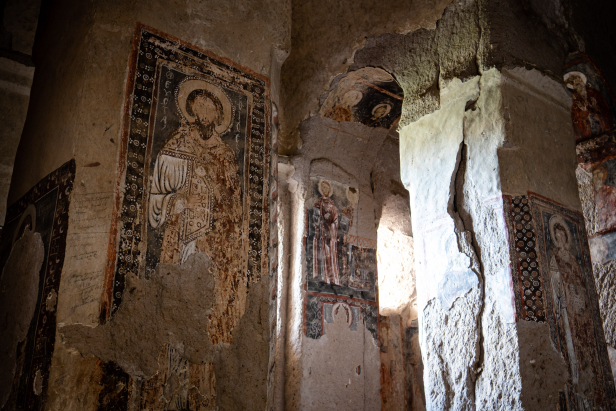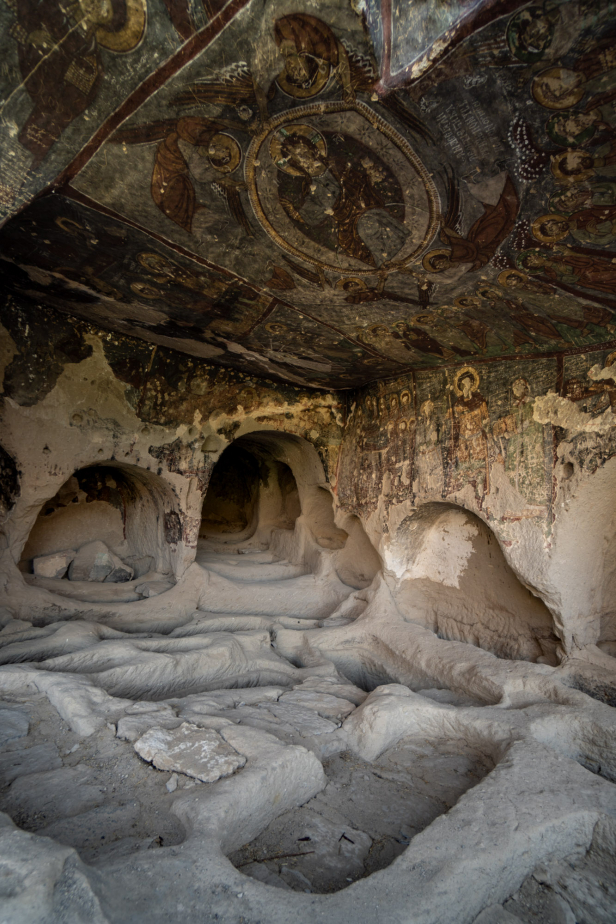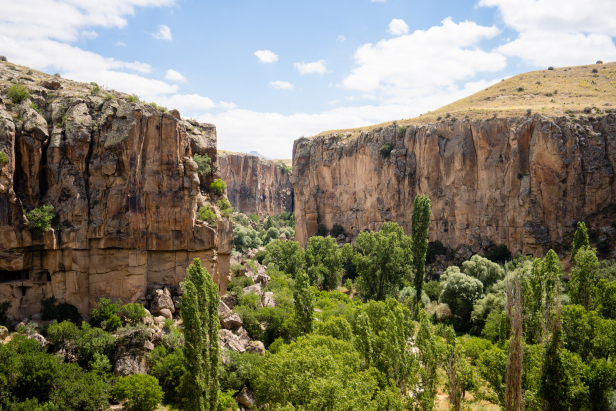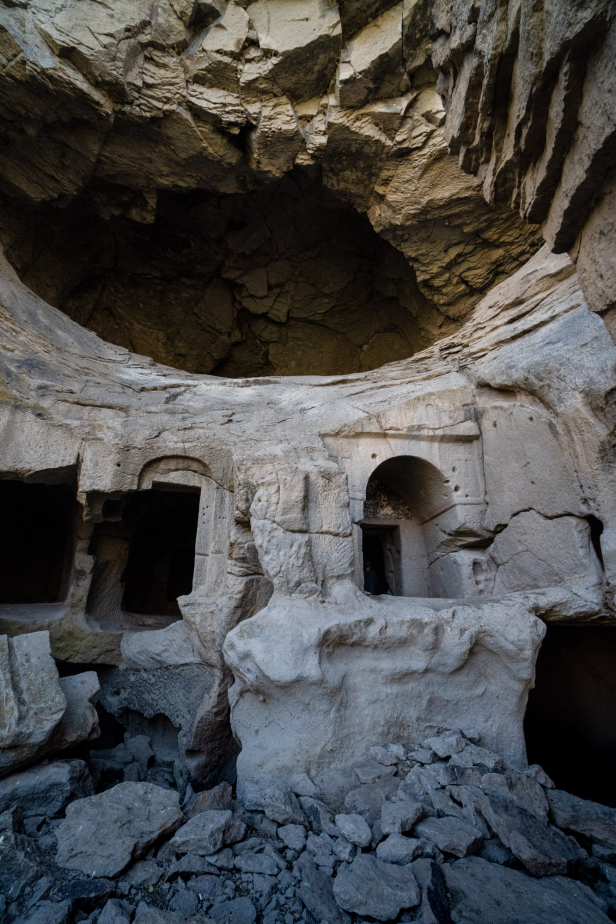The Ihlara Valley: Nature Walk, Cave Churches, and Historic Villages
Ihlara Vadisi
/ By Josh
Cost: 90TL (Museum Passes accepted, this fee is only for one portion of the Ihlara Valley)
Great for: Nature Walks, Hiking, Canyon, Cappadocia, Cappadocian Church, Troglodytes
Nestled into a sheltered canyon, the Ihlara Valley exchanges the dry lunar landscapes of Cappadocia for a secluded garden-like atmosphere. While the landscape may be different, it is full of the quintessentially Cappadocian cave churches carved into the cliffs and decorated with vibrant frescoes. This combination of historic art and lush greenery all set in the midst of a dramatic canyon have made it one of Cappadocia’s most popular destinations.
Subscribe to The Art of Wayfaring
Like the rest of Cappadocia in general, the history of the Ihlara Valley begins with a volcano. A series of eruptions by Mount Hasan, clearly visible to the south-west, blanketed the land in a thick layer of lava and hot ash which hardened into orange, white, and red stone. The stone is heavily fractured, often forming tightly interlocked geometrical columns.
With the passage of time the Peristrema stream (now known as the Melediz) carved a winding path through the dense rock of Ihlara before finding the wide valleys and plans beyond (the neolithic settlement of Aşıklıhöyük is just downstream). Today the canyon is over 16 kilometers wide, 150 meters deep, and 200 meters wide, hemmed in with sheer cliffs of red-orange stone.
Well watered and hidden amongst the rolling hills and folds of the land, the Ihlara Valley became an ideal place for those seeking seclusion. As Christianity took root in the region, the caves and valleys of Cappadocia became increasingly important for those fleeing persecution. Initially fleeing Roman persecution and later shelter from Arab raids, and Seljuk expansion, the Christian populations of Cappadocia turned to underground cities or hidden places such as this. Even in times of peace, monks seeking quiet turned to the Ihlara valley where the lush valley offered a peaceful and bountiful environment to support a small population. In total, some 4,000 dwellings and 100 churches were built in the valley as well as three towns; Yaprakhisar (including old Selime), Belisırma, and Ihlara.
While not all the churches were active (or even standing) at the same time, the Ihlara Valley continued as the home of Greek Orthodox monks until 1923 when Christians were sent from Turkish lands and replaced with Turkish Muslims from the Greece and other Balkan states.
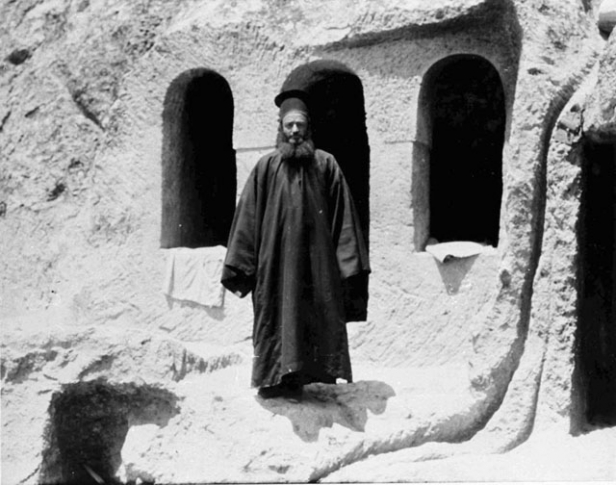
Why Visit?
Today, the Ihlara Valley is about walking through nature and history. A beautiful trail runs the length of the valley, following the gentle course of the Melendiz stream between the quaint towns of Ihlara down to old Selime. Along the way you’ll find the trail branches up to numerous churches with their stunning frescoes often still preserved. Ever-present are the red cliffs peering down at you through a forest of willow and poplars with brambles, nettles, and flowering hyacinth covering the ground. Lone windows stuck high up in the cliffs point to the numerous other chambers and tunnels with secret entrances that hide behind the stone face.

By nature of being a canyon, the trail is more or less a single route rather than a loop. If you don’t want to return by the same trail you came in on you can take a taxi back to your starting point or cross the stream and return by the opposite side anytime there is a trail there. Some tour packages will be set up so that you get dropped off at one point and picked up at another.
While the valley is about 16 kilometers long, there is a gated section where the majority of the churches can be found. Access to this area is paid (90TL, Museum Pass accepted) and can be entered by three points; one in the village of Belisırma, one in the village of Ihlara, and another near the village of Ihlara known by the poetic title of “Ihlara Valley Touristic Facilities.” The “Touristic Facilities” entrance is the easiest to find parking at but is above the valley and will require you to walk the 360 stairs down to the valley floor.
Subscribe to The Art of Wayfaring
The gated section is 7.5 kilometers in length (from Ihlara entrance to Belisırma), returning by the same route will of course double the distance. If that’s not enough walking for you, you can make it a 32 kilometer hike from Ihlara to Selime and back again.
The only steep sections of the walk are when you need to bypass a file of fallen rocks or when you need to climb a set of stairs to reach the cave churches carved in the foot of the cliffs. While some walkers are decked out in hiking gear, others are in flowing dresses and high heels, somewhere between these choices of footwear will serve you just fine in the park, though the trail may get rougher in other sections.
While there are some freestanding churches built of block masonry, the vast majority of the churches in the Ihlara Valley are cave churches. The design of these cave churches are rather unusual as the churches were designed to face east, no matter what direction the cliff was facing.
Many of the original names of the churches have been lost and so the signs will often use descriptive names taken from the art (though not as an Orthodox Christian would understand it) or whatever plants were growing near them.
Like many of the other churches of Cappadocia, frescoes are commonly used to adorn the interiors. The colour palates used by the medieval artists are often different than those seen in other places in Cappadocia where dark blue tends to dominate as a background colour. Here you’ll find bright greens, orange, and even white making up the dominant colours in the art.
While this is far from a complete list, here are a few of the highlight churches:
The Pillared Church (Direkli Kilise)
Also known as the column church it can be found on the west side of the river near Belisırma just above the road into the valley. The name comes from the design of the church with its four square pillars holding up a high ceiling. The four pillars divide the nave into three aisles, ending in a trio of horseshoe apses. The pillars, walls, and ceiling are covered in fine frescoes; while the apse depicts biblical scenes, the rest tend to focus on important saints.
The church is entered through a wide narthex with a beautifully carved façade on the exterior. The stone in the narthex is soft and powdery and a great deal has eroded away though you can still make out stairs and holes for beams that mark where a second floor had once been. The narthex is minimally decorated with red tracery.
Above the Pillared church is the Bahattin Hayloft: a rather poor name for a fine cave church with beautiful paintings including an enthroned Christ in the apse dome.
Church of St George (Kırkdamaltı Kilise)
The outer walls of the Church of St George have collapsed, making the already irregular church design even more chaotic looking. The roof is nearly flat and covered with frescoes while the floor is full of graves. The frescoes here depict biblical scenes and various saints as well as a particularly interesting panel of the church’s donors holding a model church and presenting it to St George. In this scene St George is wearing military gear and holding his dragon-slaying lance.
Snake Church (Yılanlı Kilise)
The original name of this church appears to have been forgotten and is instead known by one of the painted scenes inside where sinners are shown being punished by snakes.
The church consists of two main parts, a large barrel-vaulted narthex and a flat roofed nave with its semidome apse. The narthex and nave are both painted, though the styles differ between the two. While the apse is painted in a more classical palette with a dark blue background, the narthex paintings are dominated by yellows, reds, and greys. Rows of saints, biblical scenes, and an enthroned Christ in the apse cover the majority of the walls and ceilings of the church. The major exception is the flat ceiling of the nave with its bold cross relief.
Karagedik Church
Karagedik Church is one of the few churches built of stone masonry in the area, the vast majority having been carved as cave churches. The church was built as a large closed cruciform topped by a dome. Over time stones from the collapsing cliffs have crashed through the church, ruining much of the building and burying some of it in debris. The church is on the north-east side of the Melendiz stream, near the Belisırma entrance to the gated portion of the park.
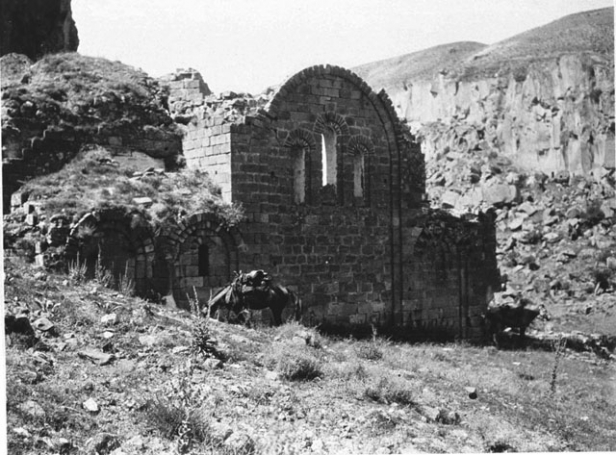
If you happen to have read Gertrude Bell’s description of the Church Architecture you’ll see that she confuses Karagedik Church with the abovementioned Snake Church (which she calls Ilanli Klisse).
Subscribe to The Art of Wayfaring
The Church of Daniel Pantonassa (Ağaçaltı Kilise)
Set near the bottom of the stairs of the “Touristic Facilities” entrance, the church of Daniel Pantanossa is known in Turkish by the rather vague Ağaçaltı, meaning “Under a Tree”. The church is home to some of the most unique frescoes of the Ihlara Valley. While they are simple, they are done in pastel orange, green, and blue with a white background. The lack of pupils and irises in the oversized eyes make the characters rather eerie. Above the nave is an irregular dome, almost square in shape, with a painting of a seated Christ with blond hair surrounded by four angels and groups of saints with red hair and peering eyes.
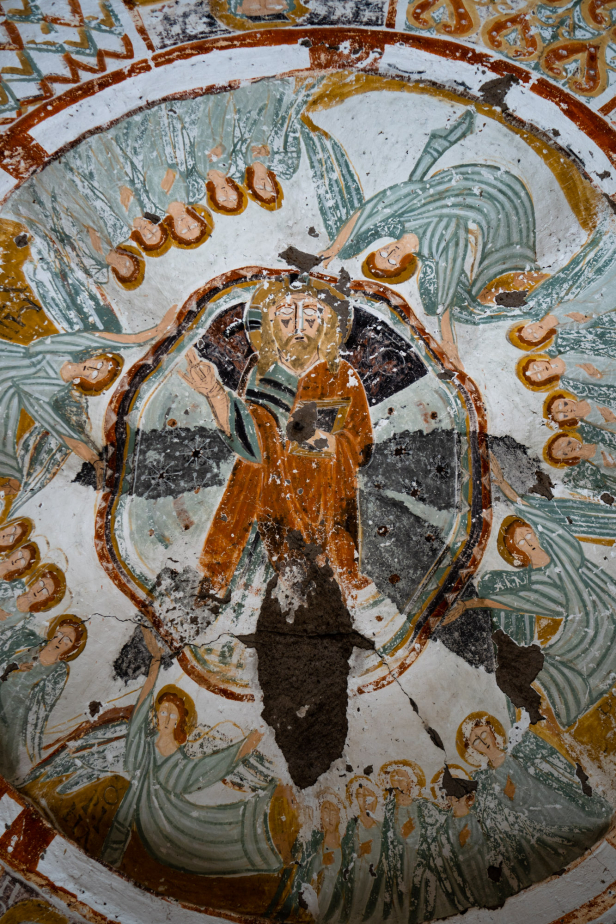
Hyacinth/Jacinth (Sümbül Kilise)
The actual name of this church seems to have been lost and is instead now known by the Hyacinth flower that grows in the valley here. The church is actually a fairly large two-storeyed monastic complex with only a very small church, no bigger than a chapel. While the church is small, its design is interesting and the surfaces are full of frescoes. The church is vaguely cruciform with a nave, transversal vaults and a set of apses on the eastern wall.
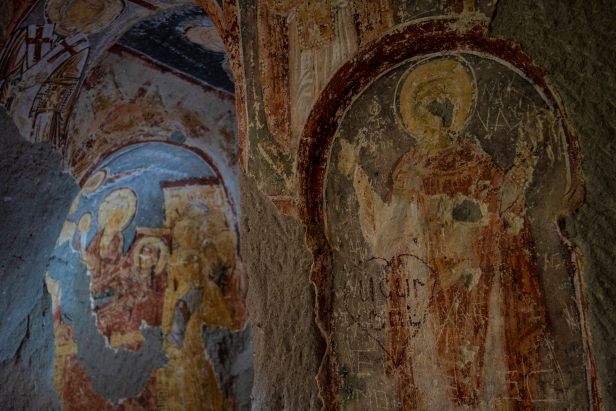
The complex consists of three main halls, two below, and a third above reached by a set of stairs. This upper hall opens onto a sort of porch with a façade of blind arches that sits above the entrances below.
Pürenli Seki Church
Pürenli Seki Church (meaning “Heather Terrace”) is closed to visitors for restoration, though as the sign is dated to 2016, it’s unlikely that it will open anytime soon. Near the entrance is a large niche carved into the cliff with the remains of a worn fresco still visible, though not clear.
Fragrant Church (Kokar Church)
Consisting of a church, narthex, and parakklesion/funerary chapel, this church was built to an unusual plan necessitated by the orientation of the cliff face here. The odd layout is further confused by the fact that visitors now enter through the ruined church apse. Along with the frescoes of the Jacinth Church the paintings here are some of the more unusual, making heavy use of geometric patterns in deep green and red tones. The large cross with the Hand of God in its center dominates the vaulted ceiling and is surrounded by various geometric patterns.

Ala Church (Ala Kilise)
The Ala Church, or “Great” Church can be found in old Belisırma next to the oil press (or Bezirhane). The exterior of the cave church is carved into a fine façade similar to those of Açıksaray with keyhole niches. The architecture itself is attractive, though the frescoes have faded and been badly damaged.
Subscribe to The Art of Wayfaring
How To Get There
Car
The Ihlara Valley is easy to reach from other sights in Cappadocia or cities further west such as Konya or Aksaray with excellent signage from the the D300 (Aksaray – Nevşehir) Highway. The Belisırma entrance is a difficult one to park at on a busy day, though if you come during off season this shouldn’t be a problem. The best entrance for parking is the Ihlara Valley Touristic Facilities entrance, though this will have you descending (and later ascending) the 360 steps to the valley floor.
For more about car rental and driving in Turkey make sure to read our full drivers guide.
Public Transit
If you want to take public transit you’re going to be somewhat limited in where you can get to Ihlara Valley from. Along the valley the villages of Selime and Ihlara are the best connected though Selime will have you a long ways from the heart of the valley with all its churches.
The next best option is to find a tour operator that you can tag along with from somewhere in Göreme or Nevşehir.
Where To Stay
Despite being one of the more popular destinations in Cappadocia, the area surrounding the Ihlara Valley is rather underdeveloped in terms of accommodation options. There are a handful of hotels/pensions to be found in the village of Ihlara, Belisırma, and Selime, though the best place to find hotels nearby is in the town of Güzelyurt which is home to a number of Cappadocia sights including the Red Church as well as the monastery known as High Church. If you’re looking to camp your best bet is to try some of the restaurants along the river. They are usually willing to rent out a patch of their forest for a good price.
Other Tips
Planning on visiting Ihlara Valley? Make sure to check out our other guides to the sights of Cappadocia and the rest of Central Turkey!
Subscribe to The Art of Wayfaring
Have any tips or info to add? Spot any mistakes? We’d love to hear about it.
